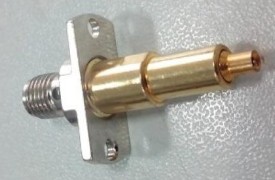At present, the frequency spectrum below 6GHz is crowded and the available frequency bands are quite fragmented. In order to obtain greater bandwidth, 5G has begun to develop towards millimeter wave (mmWave). However, millimeter-wave signals have characteristics such as fast attenuation, susceptibility to blockage, and short coverage distances, making 5G base stations and terminal development face technical challenges, which in turn affect the design of antennas and radio frequency (RF) front-ends.
ADI’s communications infrastructure business unit's strategic market in China, Yu Yong pointed out that the 5G large-scale antenna array technology has made it have higher requirements for the integration, bandwidth and cost of radio frequency components. The 5G frequency band includes the low frequency frequency band below 6GHz and the high frequency millimeter wave frequency band. Even the low frequency band is much higher than the current 4G frequency band. Therefore, if the 5G RF performance index requirements are to be met, the relevant RF component process and circuit design will be required. Brings greater challenges.

In the past, the RF front-end mostly used discrete components, which were connected to the transceiver (TRx), power amplifier (PA), low noise amplifier (LNA) and Active and passive components such as filters. However, with the increase in the amount of RF components, Qorvo product marketing manager Chen Qinghong pointed out that the current 4G high-end mobile phone RF component modularization is an inevitable trend, and 5G will further accelerate the trend of component integration. Among them, the types of modules include packaging, low-loss sheet SMT, flexible board SMT, etc., but no matter which method is used, the problems of heat concentration and high power consumption must be solved.
Zhang Zhaoqiang, Anokiwave's Asia-Pacific sales director, further explained that 5G millimeter wave signals are vulnerable to loss and interference. In order to reduce signal loss during the PCB transmission process, RF components and antennas must be integrated to shorten RF traces. In addition, as the frequency becomes higher, the antenna size and the distance between each antenna will be greatly reduced. It is difficult to integrate discrete components between the antennas. Therefore, the RF component and the antenna must be integrated. In response to this trend, the company uses silicon process technology to integrate RF components into a four-channel millimeter wave IC, and then integrates it with the antenna into a module to solve the problem of signal transmission loss.
In addition, Zhang Zhaoqiang also mentioned that the problem of base station heat dissipation is a big challenge for RF component and antenna design. In the past, radar and RF technology were mainly used in military and national defense. Size and cost are not the main design considerations, so if you want to use related In addition to overcoming the size problem for technical realization of commercial base stations, the huge cost of base station heat dissipation is also a major problem. Anokiwave is also trying to improve the heat dissipation problem from packaging. Its first-generation IC uses QFN packaging technology, but considering the poor heat dissipation effect of plastic packaging, the second-generation product adopts wafer-level die-size packaging (WLCSP) to improve heat dissipation. The problem can also further reduce the package volume.
Vehicle Router,Vehicle 4G Router,Vehicle 4G Wireless Router,Vehicle Wifi Router
Shenzhen MovingComm Technology Co., Ltd. , https://www.movingcommiot.com